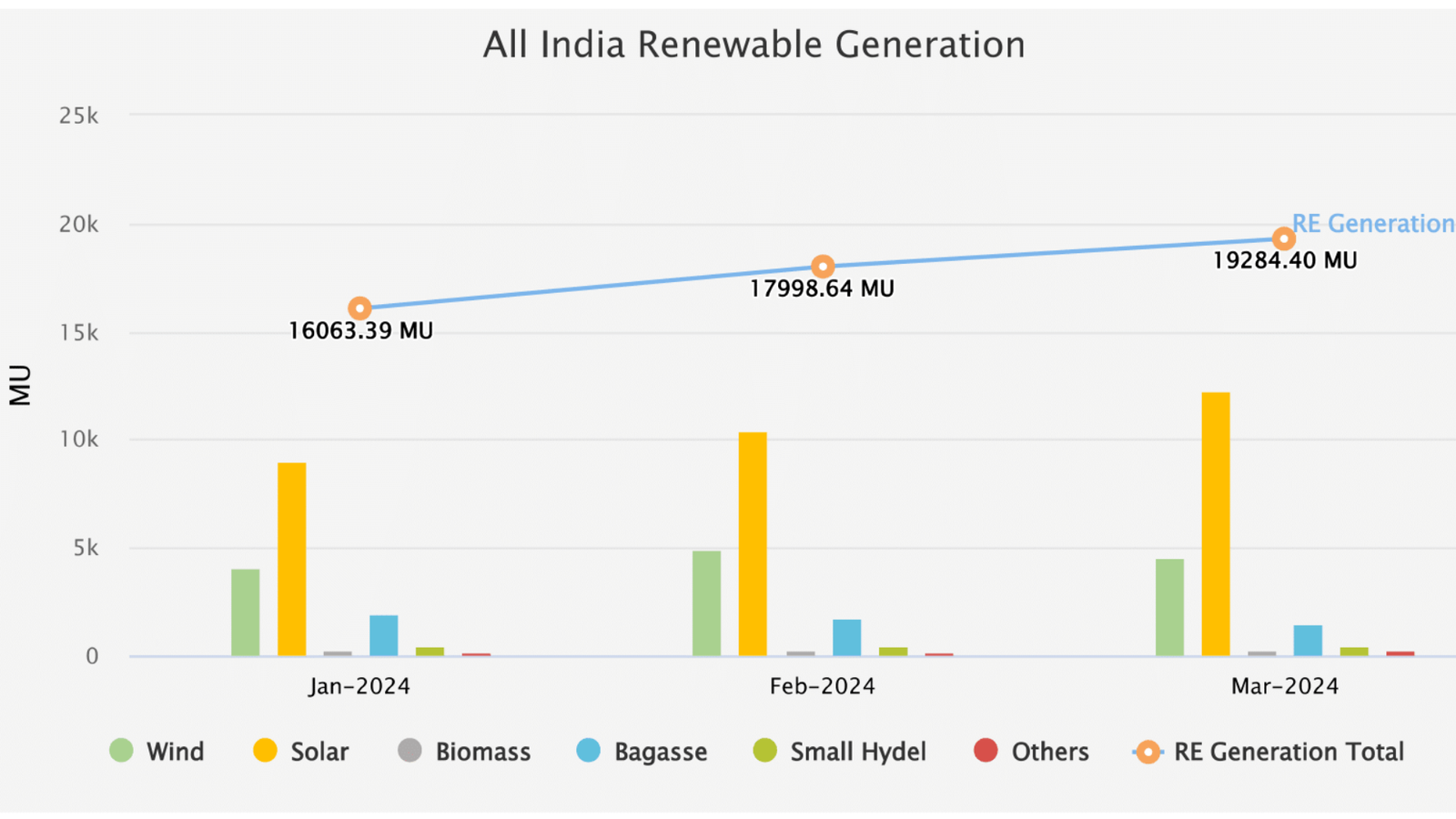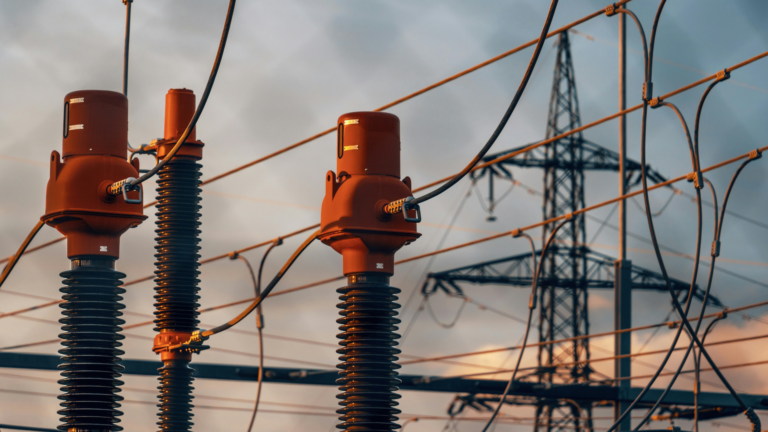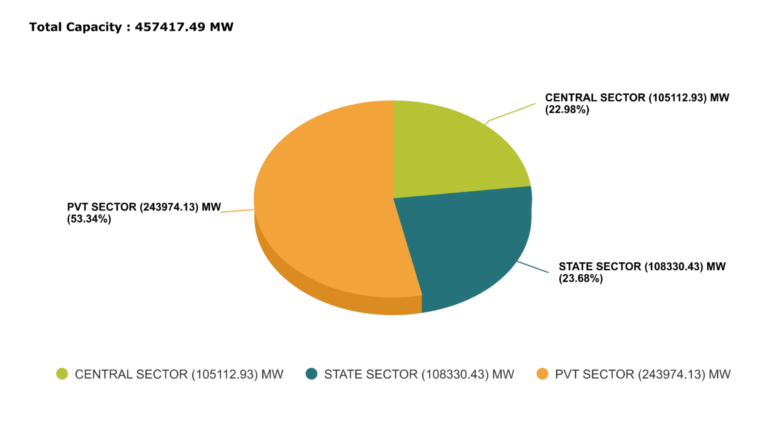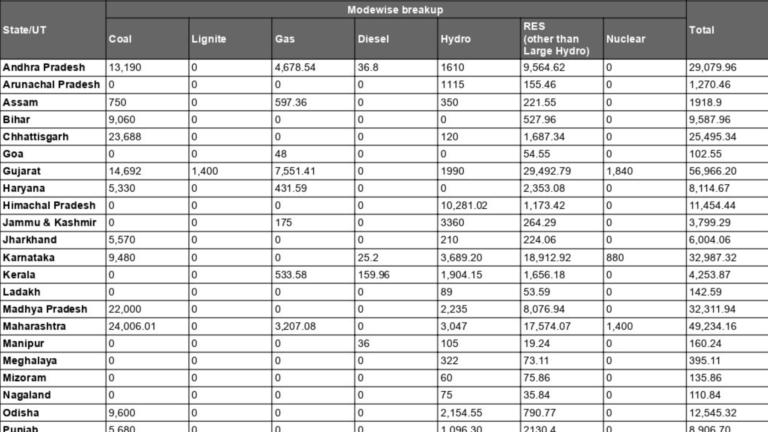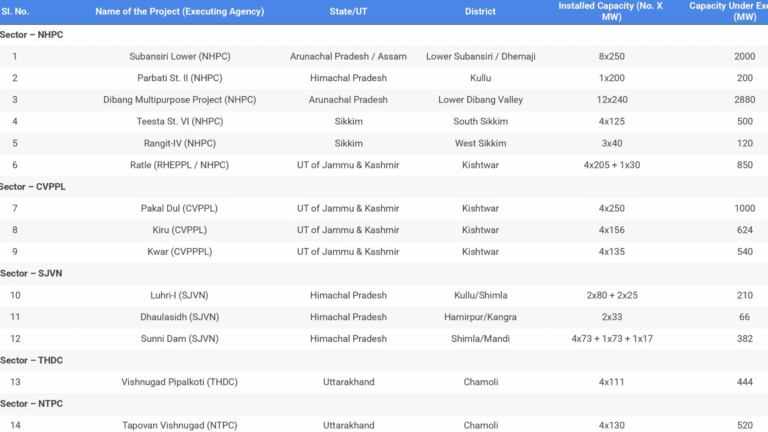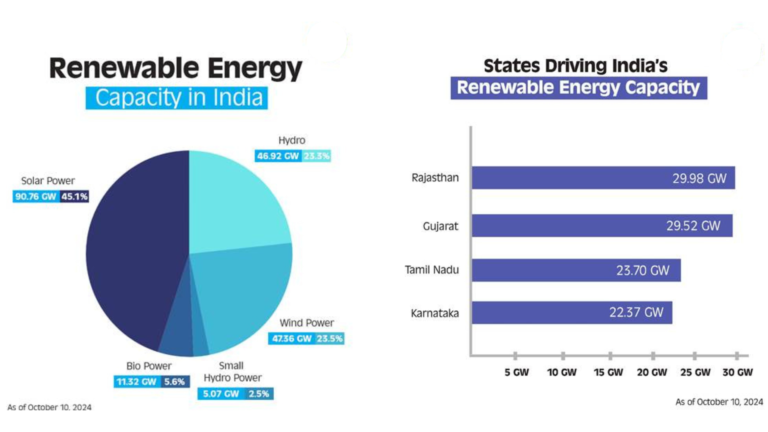Author: PPD Team Date: 06/01/2025

Year-End Review: India’s Renewable Energy Progress in 2024
By November 2024, India had a total non-fossil fuel capacity of 214 GW, an increase of over 14% from the 187.05 GW recorded during the same period in 2023. From April to November 2024, India added nearly 15 GW of renewable energy, nearly doubling the 7.57 GW added in the same months of 2023.
PM-Surya Ghar: Muft Bijli Yojana
Launched on 13th February 2024 with an outlay of Rs 750 billion, the PM Surya Ghar: Muft Bijli Yojana aims to install rooftop solar systems in one crore households, providing up to 300 free units of electricity per month.
In its first 10 months, 0.7 million installations were completed, a ten-fold increase in monthly installations compared to pre-launch levels.
Gujarat, Maharashtra, Kerala, and Uttar Pradesh saw successful implementation.
The government also introduced guidelines for ‘Incentives to DISCOMs’ and launched the Model Solar Village scheme with an Rs 8 billion outlay.
National Green Hydrogen Mission
The National Green Hydrogen Mission, with a Rs 197.44 billion budget, continued in 2024 to make India a global hub for green hydrogen production. The mission aims to attract investments of over Rs 8 trillion by 2030, creating 600,000 jobs.
Key activities in 2024 included the implementation of the Strategic Interventions for Green Hydrogen Transition (SIGHT) Programme, awarding tenders for green hydrogen production, and selecting manufacturers for electrolyser capacity.
A Rs 4.96 billion outlay was allocated for pilot projects in the transport sector, while Rs 115 crore was dedicated to initiatives in the shipping industry.
India also signed its first Green Ammonia export agreement with Japan at the International Conference on Green Hydrogen in September.
Solar and Wind Energy
India’s solar capacity reached 94.17 GW by November 2024, with a project pipeline of 261.15 GW.
Notable projects included the commissioning of India’s largest Solar-BESS system in Rajnandgaon, integrated with a 152.325 MWh solar plant.
India’s wind energy capacity reached 47.96 GW by November 2024, with an additional 74.44 GW in the pipeline. Key contributing states included Gujarat, Karnataka, and Tamil Nadu. SECI also announced plans for offshore wind projects with a Rs 74.53 billion Viability Gap Funding (VGF) scheme to establish India’s first offshore wind farms.
Geothermal and Bioenergy
The Geological Survey of India identified 381 potential geothermal sites, with an estimated total capacity of 10,600 MW. The National Biomass Program made progress in pellet manufacturing, supported by updated Central Financial Assistance (CFA) schemes.
Public Sector Undertakings (PSUs)
The Indian Renewable Energy Development Agency (IREDA) achieved record loan sanctions of Rs 373.54 billion. The Solar Energy Corporation of India Limited (SECI) attained Navratna status and saw a 20% growth in its turnover.
Photo credit: Central Electricity Authority (CEA); Source of information: Press Information Bureau (PIB)

